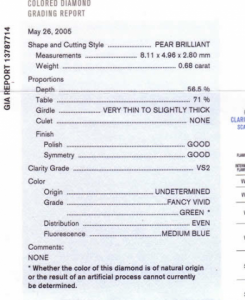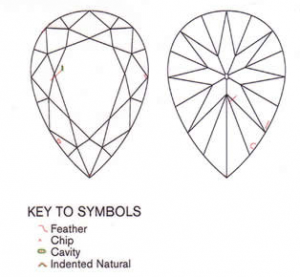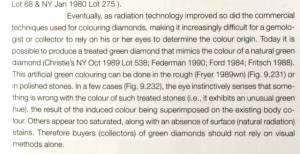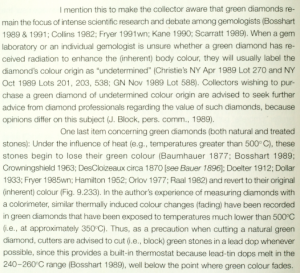- Joined
- Apr 30, 2005
- Messages
- 34,288
I'd heard of these but this is the first GIA report I've ever spotted on one so I thought I'd share it.
It is a 0.68 ct Pear and is priced at $40,800.
http://www.aliyadiamonds.com/items/0-01~0-99-carat/pear-0-68-fancy-vivid-green-vs2-g0507a1-detail.htm?1=1
Can you imagine spending $41K on this?
If GIA can't determine color origin who in the world would pay that?
When/if new technology is perfected that can determine color origin the value of this Vivid Green will shoot WAY up or WAY down.
Oh Man!!! What a risk!
What really blows my mind is someone somewhere KNOWS the color's origin, be it natural or lab.
If it is from a lab we have a big fat liar trying to print money.
If it is from a mine we have a crying mine owner who is probably angry at the cutter for polishing too much of the skin off the girdle. (I'm guessing)


It is a 0.68 ct Pear and is priced at $40,800.
http://www.aliyadiamonds.com/items/0-01~0-99-carat/pear-0-68-fancy-vivid-green-vs2-g0507a1-detail.htm?1=1
Can you imagine spending $41K on this?
If GIA can't determine color origin who in the world would pay that?
When/if new technology is perfected that can determine color origin the value of this Vivid Green will shoot WAY up or WAY down.
Oh Man!!! What a risk!
What really blows my mind is someone somewhere KNOWS the color's origin, be it natural or lab.
If it is from a lab we have a big fat liar trying to print money.
If it is from a mine we have a crying mine owner who is probably angry at the cutter for polishing too much of the skin off the girdle. (I'm guessing)







300x240.png)